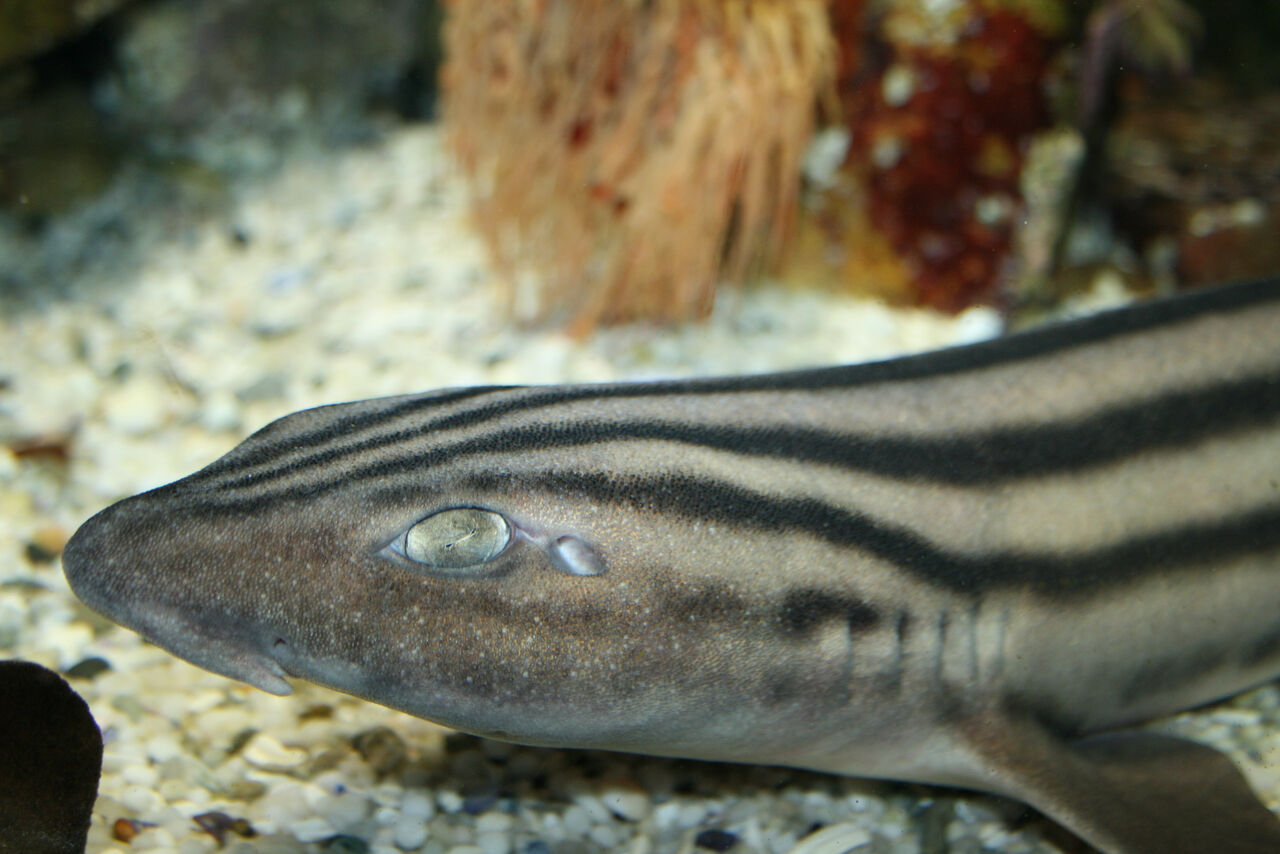Appearance and lifestyle:
With its thick, dark stripes running like a cosy, stripey onesie, this bottom-dweller has a look that’s unmistakable. Growing up to 1.1 metres, it has a short head and snout, with dainty barbels that add to its unique charm. The pyjama catshark (Poroderma africanum) is the rock star of the shark world, with a sleek, side-compressed body and two dorsal fins placed far back—talk about making an entrance. Its pectoral fins are broad, pelvic fins lower, and adult males sport short claspers with a fused "apron."
Habitat:
Exclusive to South Africa's coastal waters, the pyjama catshark loves hanging out in rocky reefs and kelp beds.
Diet:
With its tough, arrowhead-shaped dermal denticles and bold stripes, the pyjama catshark is ready for any meal. These sharks feast on a variety of small creatures, including anchovies, gurnards, hakes, hagfish, smaller sharks and rays, and even crabs, squids, and worms. In False Bay, they love Cape rock lobsters, but they'll happily scavenge fish offal too. When chokka squid spawn, pyjama sharks ditch their nocturnal habits and gather in droves around the squid egg beds. They use their stripes as camouflage, sneakily ambushing female squid as they lay their eggs—talk about stealthy snack time!
Threats:
The pyjama catshark is listed as Least Concern by the IUCN, but its small range and increasing pressures are concerning. Many fishermen see these sharks as pests that steal bait, waste effort, and compete with other fish, often killing them instead of releasing them. This harms ecosystems and fish stocks overall, affecting fishermen’s livelihoods.
The WWF SASSI has added the pyjama shark to its Red List to discourage indiscriminate killing and encourage release, despite it not being commonly sold.
